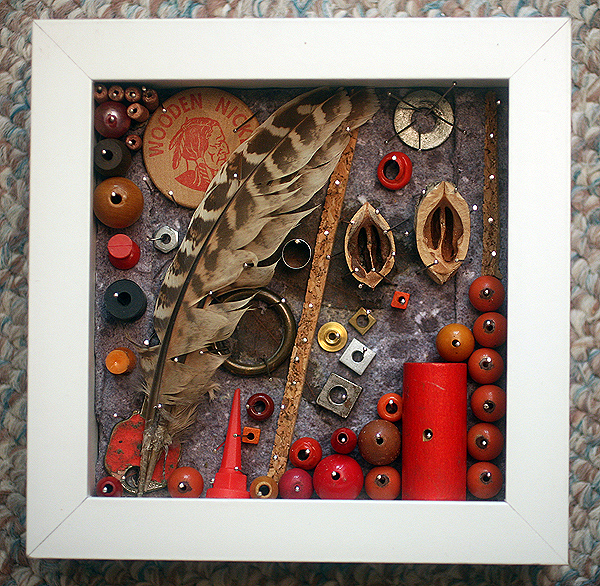
6 x 6″ shadow box collage on handmade paper backed by salvaged cork board.
I’ve made a decision. I’m going to give away artwork. A lot of it. I’ve talked myself out of this many times, constrained by fears that I’ll be exploited, alienate patrons who’ve supported me with their purchases in the past, and contribute to a culture that takes the work of artists for granted. But I can no longer live and produce from a posture of defense. I want to approach everything I do with the question, “What can I give?”
.
Are you familiar with the term “Indian giver”? It’s a racist expression used to describe someone who gives, presumably without strings attached, while expecting the gift returned or reciprocated. The term reflects a presumption by colonizers toward the indigenous people of the now U.S. They saw the earth and everything it produces as something to be owned, every exchange as a transaction where sentiment is either primary (e.g. an open-hearted gift), or irrelevant (e.g. “just business”—where exploitation is the prerogative of the powerful.) It didn’t occur to them that another way was possible.
.
In indigenous tradition, nature is recognized as the source of all, and people followed her economic model. Nature gives freely, with persistent abundance when her gifts are recognized, appreciated, and received with care. Over and over in her book, “Braiding Sweetgrass,” botanist Robin Wall Kimmerer sites examples of wild plants that thrive when rightly harvested, more so than when simply left undisturbed. Receiving the gifts of nature, therefore, is an acknowledgment of interdependence, a demonstration of care, and it comes with responsibilities, number one among them: gratitude.
.
The same is true for me as an artist, I thrive when my gifts are received. I’m inspired by knowing that my vision is of value to others, by the open space in my studio. As a student and child of the family of nature, I want to emulate my teacher. But I am not naive. I understand that nature is exploited, to the point where species are going extinct at the rate of 200 per day. I need to set this up thoughtfully, one piece of art at a time—starting with this one—called “Wooden Nickel”—which is all about celebrating the beauty of discarded things.
.
Stay tuned!

